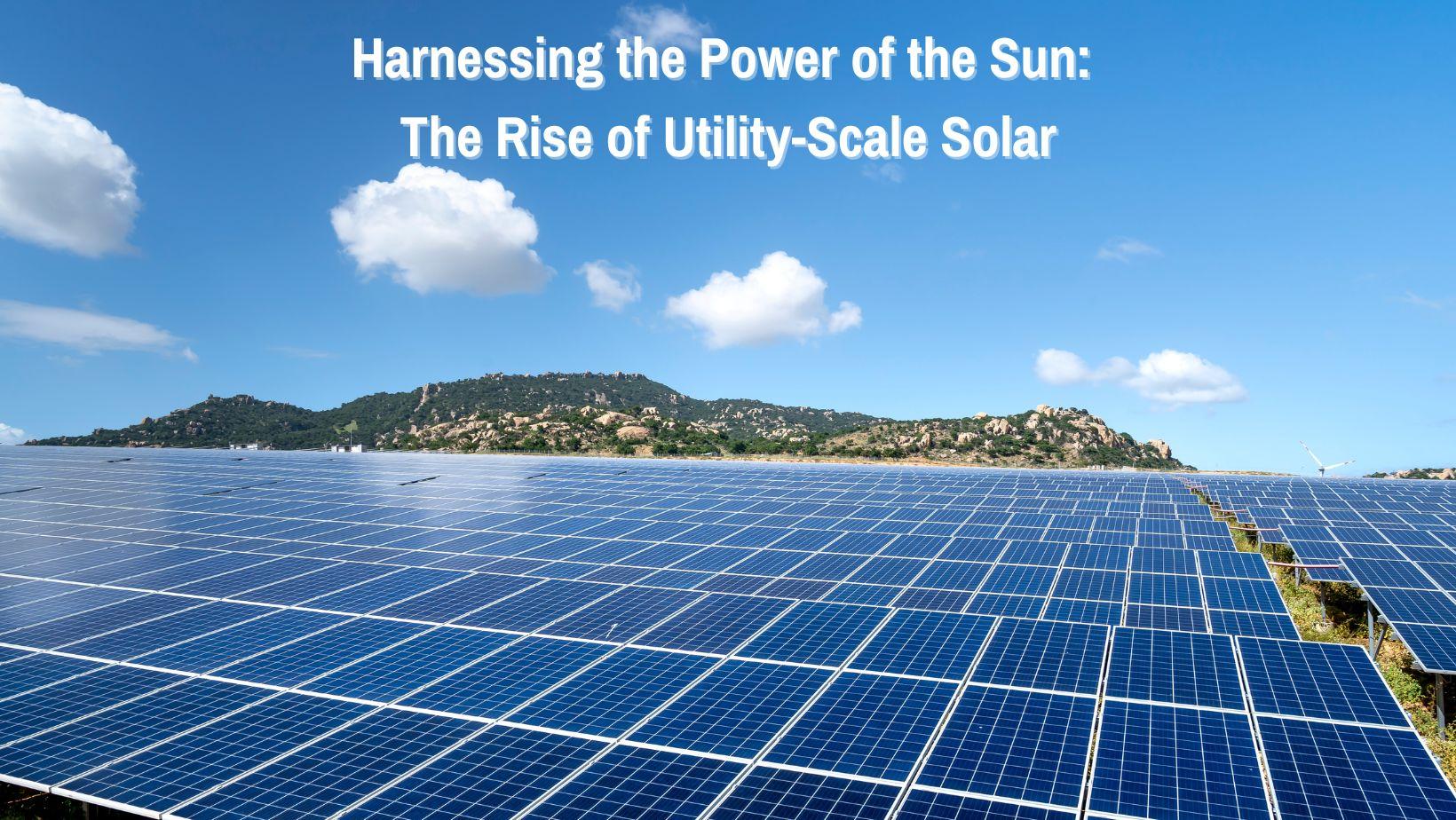In the quest for sustainable and environmentally friendly energy sources, solar power has emerged as a frontrunner, paving the way for a cleaner and greener future. Among the various applications of solar energy, utility-scale solar projects stand out as key contributors to the global transition towards renewable energy. In this article, we will explore the significance of utility-scale solar, its impact on the renewable energy landscape, and the role of renewable energy solutions companies in driving this transformative change.
· Understanding Utility-Scale Solar
Utility-scale solar refers to large-scale solar power plants designed to generate electricity on a massive scale. Unlike smaller residential or commercial solar installations, utility-scale solar projects are characterized by their capacity to produce megawatts (MW) or even gigawatts (GW) of electricity. These solar farms typically consist of numerous photovoltaic (PV) panels strategically arranged over vast expanses of land, maximizing exposure to sunlight and optimizing energy production.
The Advantages of Utility-Scale Solar
· Economies of Scale:
One of the primary advantages of utility-scale solar is the economies of scale it offers. By deploying large numbers of solar panels in a centralized location, the cost per unit of electricity generated is significantly reduced, making utility-scale solar more cost-effective compared to smaller-scale installations.
· Grid Integration:
Utility-scale solar projects are designed to seamlessly integrate with existing power grids. This ensures a stable and reliable energy supply, addressing the intermittency issues often associated with smaller solar installations. The consistent power output from utility-scale solar contributes to grid stability and reliability.
· Land Use Efficiency:
While utility-scale solar projects require large parcels of land, they are often located in areas with abundant sunlight and minimal environmental impact. These projects can efficiently use available land, preventing deforestation and minimizing habitat disruption.
v The Role of Renewable Energy Solutions Companies
Renewable energy solutions companies play a crucial role in the development, construction, and maintenance of utility-scale solar projects. These companies specialize in providing comprehensive solutions for harnessing solar energy on a large scale, ensuring the optimal performance and longevity of solar installations.
· Project Development:
Renewable energy solutions companies are involved in the entire project lifecycle, from site selection and feasibility studies to securing necessary permits. Their expertise ensures that utility-scale solar projects are strategically located for maximum solar exposure and comply with regulatory requirements.
· Engineering and Construction:
These companies are responsible for the design, engineering, and construction of utility-scale solar farms. This includes selecting the most suitable solar technology, arranging the layout of solar panels, and implementing efficient energy storage solutions to enhance grid reliability.
· Operations and Maintenance:
Post-construction, renewable energy solutions companies monitor and maintain the solar installations to ensure optimal performance. Regular inspections, cleaning, and repairs are conducted to maximize energy output and extend the lifespan of the solar infrastructure.
Conclusion
Utility-scale solar represents a pivotal solution in the global shift towards renewable energy, offering a sustainable and economically viable alternative to traditional fossil fuels. As technology continues to advance and the demand for clean energy grows, the role of renewable energy solutions companies becomes increasingly vital in driving the development and success of utility-scale solar projects. Through their expertise, these companies contribute significantly to the realization of a more sustainable and environmentally conscious energy landscape.



